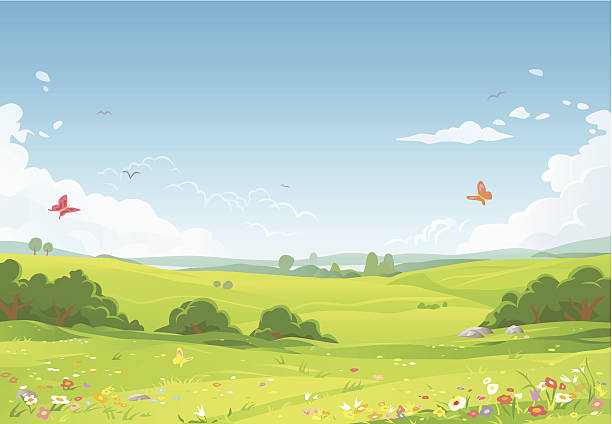Landscaping is more than just adding plants and flowers; it’s about transforming outdoor areas into spaces that reflect personal style, offer comfort, and enhance the natural environment. Whether you’re working with a large backyard, a small garden, or an urban balcony, a thoughtfully planned landscape can make a big difference. In this article, we’ll discuss key principles and ideas to help you create a beautiful, functional outdoor space that you can enjoy year-round.
1. Understanding Your Space and Its Potential
Every yard has unique qualities, from soil type and sunlight patterns to the slope and climate. Before you begin, spend some time observing your space. Take note of areas that receive plenty of sunlight, spaces with good shade, and any natural elements that could influence your landscape design, like nearby trees, rocks, or water sources. Understanding these features allows you to select plants, structures, and designs that will thrive in your specific environment.
2. Planning for Function and Style
When planning your landscape, consider both functionality and aesthetics. Think about how you want to use the space: Do you need an area for entertaining guests, a quiet spot for reading, or a play area for kids? Different zones within your garden can cater to various purposes. For example, a cozy seating area surrounded by flowering plants creates an inviting place for relaxation, while a small lawn might be ideal for family activities.
Style also plays a significant role in creating a cohesive look. Decide on a theme that complements your home’s exterior and reflects your personal taste. Popular styles include:
- Traditional Gardens: Featuring formal layouts with symmetrical designs and neatly trimmed hedges.
- Contemporary Landscapes: Often minimalistic, using clean lines, modern materials, and structured planting.
- Cottage Gardens: Known for their charming, unstructured look with a mix of colorful flowers and plants.
Selecting a theme helps streamline your choices, making it easier to decide on plants, hardscape elements, and decorative features.
3. Choosing the Right Plants
The right plant selection is crucial for any successful landscaping project. Opt for a mix of perennials, annuals, shrubs, and trees to create layers and depth in your garden. Native plants are often the best choice, as they’re adapted to the local climate and require less maintenance. Additionally, native plants provide a habitat for local wildlife, making your garden an eco-friendly space.
To keep your garden colorful year-round, include plants with different blooming times. Evergreens, ornamental grasses, and shrubs with vibrant autumn colors add interest even during the colder months. You might also consider planting drought-resistant varieties to conserve water and reduce the need for constant watering.
4. Incorporating Hardscape Elements
Hardscape elements, like paths, patios, and retaining walls, add structure to a landscape and create spaces for various activities. A stone pathway through a garden, for example, guides visitors and adds a natural touch, while a patio provides a comfortable area for dining or lounging. Retaining walls not only manage sloping terrain but also provide opportunities to showcase plants in raised beds.
When choosing hardscape materials, consider durability and style. Natural stone, wood, and concrete are popular choices, each offering distinct looks and textures. Aim to balance these hard elements with greenery to create harmony within the space.
5. Adding Water Features and Lighting
Water features, like ponds, fountains, or even small birdbaths, add a calming and serene quality to outdoor spaces. The sound of trickling water can drown out noise, making the space feel more tranquil. Whether it’s a large pond or a compact fountain, a water feature can become a focal point in your garden.
Lighting is another essential element for creating ambiance. Use solar-powered or LED lights to highlight pathways, accent plants, and illuminate seating areas. Well-placed lights add visual appeal after dark, creating a welcoming and safe outdoor environment.
6. Landscaping in Alsager: The Value of Local Expertise
For those considering landscaping in Alsager , working with a local landscaper can make all the difference. Local experts are familiar with the climate, soil, and plant varieties that thrive in the area, allowing them to design landscapes that not only look great but are also sustainable. An experienced landscaper in Alsager can guide you in choosing plants, materials, and designs that will withstand seasonal changes and meet your needs, whether it’s for a family-friendly garden, a quiet retreat, or an elegant entertaining space.
7. Maintaining Your Landscape
A beautiful garden requires regular care. Create a maintenance plan that includes watering, pruning, and fertilizing to keep plants healthy and vibrant. Seasonal tasks, such as mulching in spring and protecting plants in winter, are also essential. If you’re new to gardening, start small to avoid becoming overwhelmed. Over time, as you become more familiar with your garden’s needs, maintaining a larger area will feel manageable.
Conclusion
Landscaping can transform any outdoor space into a beautiful, functional, and inviting area. By planning thoughtfully, choosing the right plants, and incorporating hardscape features, you can create a landscape that reflects your style and meets your needs. Whether it’s a simple garden or an elaborate outdoor living area, a well-designed landscape can enhance the beauty and value of your home, providing enjoyment for years to come.















